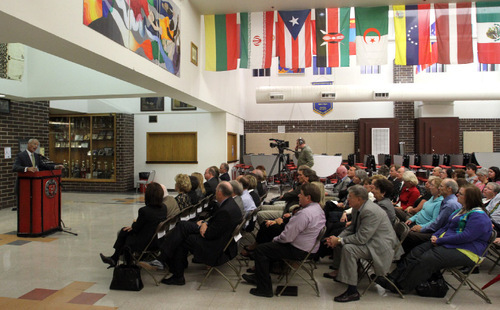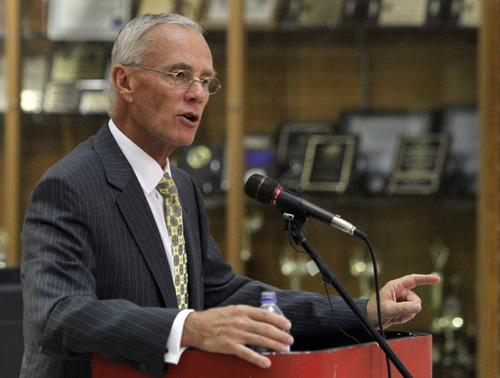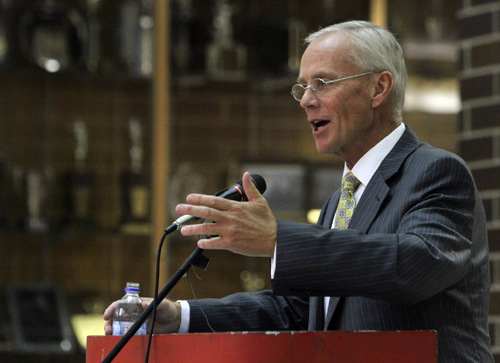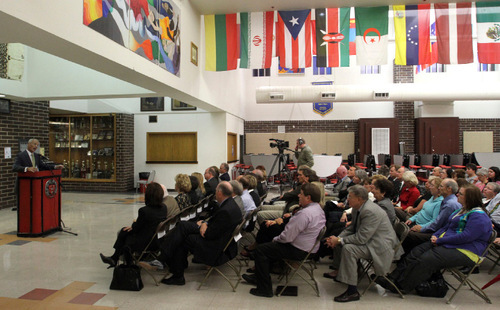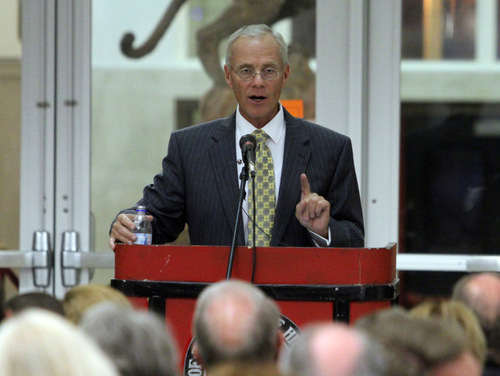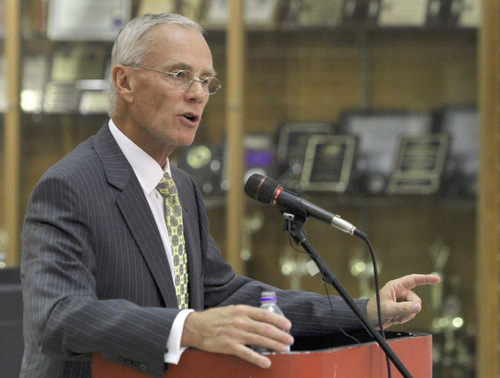This is an archived article that was published on sltrib.com in 2010, and information in the article may be outdated. It is provided only for personal research purposes and may not be reprinted.
Utah schools have achieved a lot with limited funding, but more money should be invested in areas such as early childhood education and technology to sustain and build upon schools' success, state Superintendent Larry Shumway said Wednesday evening during his annual State of Education speech.
"There will be unacceptable declines in the quality of education if we don't provide the financial resources necessary to support our children in their schools," Shumway told an audience of educators, lawmakers and education leaders at West High, noting that Utah school enrollment will likely grow by 50,000 students during the next five years.
"There are investments required just to keep what we have," Shumway said. "What we do with our current investment I've called the Utah miracle. The greater miracle will be what we achieve with new investment."
He outlined four key areas for investment: early childhood education, expanded kindergarten and support for early grades; technology; aligning curriculum to meet work force needs; and teacher ability.
For example, he said, he plans to invite school districts and charter schools to apply for up to $50,000 for projects that demonstrate "innovative applications of technology." He'll use the results from pilot projects to make recommendations to lawmakers.
He also said investments in early childhood education and the early grades "pay dividends." The state's optional, extended-day kindergarten program is slated to end after this schoolyear unless it receives more money. But a number of groups are already discussing extending it, including the Salt Lake Chamber of Commerce, the Governor's Education Excellence Commission and the State Board of Education.
Shumway said a task force is working on recommendations to ensure 12th-graders are fully engaged, including through improved counseling and student planning. He said his office is also working on a model for year-round secondary schools.
Sen. Howard Stephenson, R-Draper, co-chairman of the legislative Public Education Appropriations Subcommittee, called Shumway's speech inspiring.
"I like the idea that he is asking for additional strategic investments rather than the old method of just asking for a blanket increase in education funding," Stephenson said.
Kory Holdaway, Utah Education Association government relations director, however, said he didn't think Shumway was direct enough on the need for more education funding. Holdaway pointed to a Utah Foundation report released last week, which showed that Utah students most often rank last on the National Assessment of Educational Progress when compared to states with similar ethnic makeups, parental education levels and poverty rates.
"I think he had some good ideas. I think he undervalues the importance of resources. I think when you look at the Foundation report that came out, to me that is clear that there is a need for attention to the resources side," Holdaway said. In his speech, Shumway noted each of those demographically similar states spends far more per student than Utah.
Rep. Carol Spackman Moss, D-Holladay, said she agreed with Shumway that Utahns should focus on the successes of the state's schools and early childhood education should be a priority. She said focusing on early childhood education along with making sure children can read by the end of third grade would go a long way.
But she said emphasis should also be placed on lowering class sizes.
Shumway said after the speech that he understands how important class sizes are to parents and teachers. He said it's a "very big-ticket item." d—
State of Education speech highlights
State Superintendent Larry Shumway urged Utahns to consider investing in four specific areas:
Early childhood education, expanded kindergarten opportunities and early grade support
Information and communications technology
Aligning curriculum to meet the needs of business and the work force.
The professional abilities of teachers


